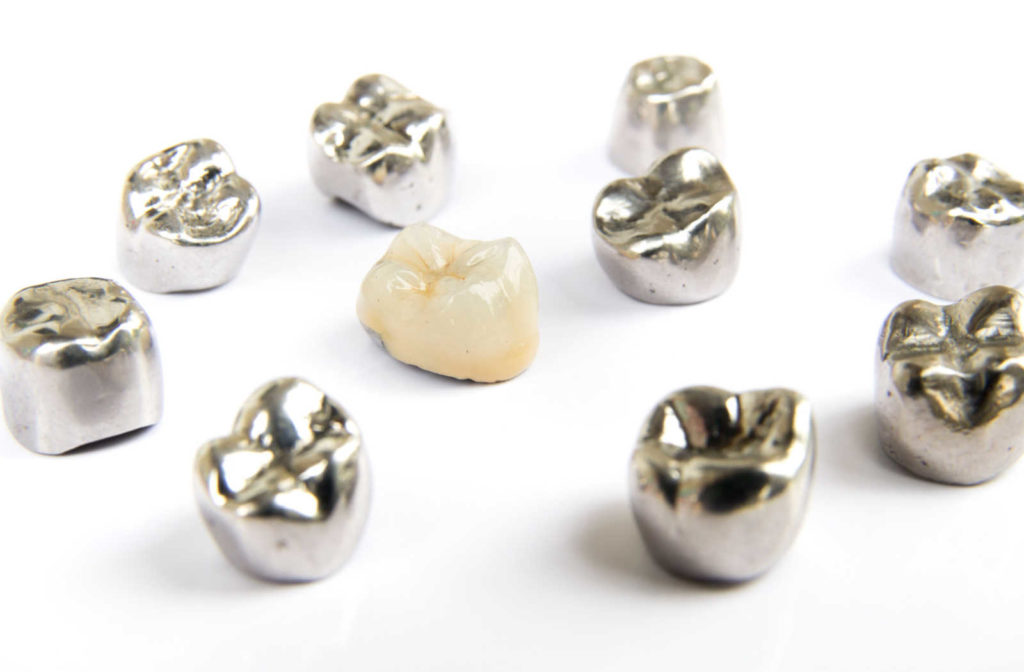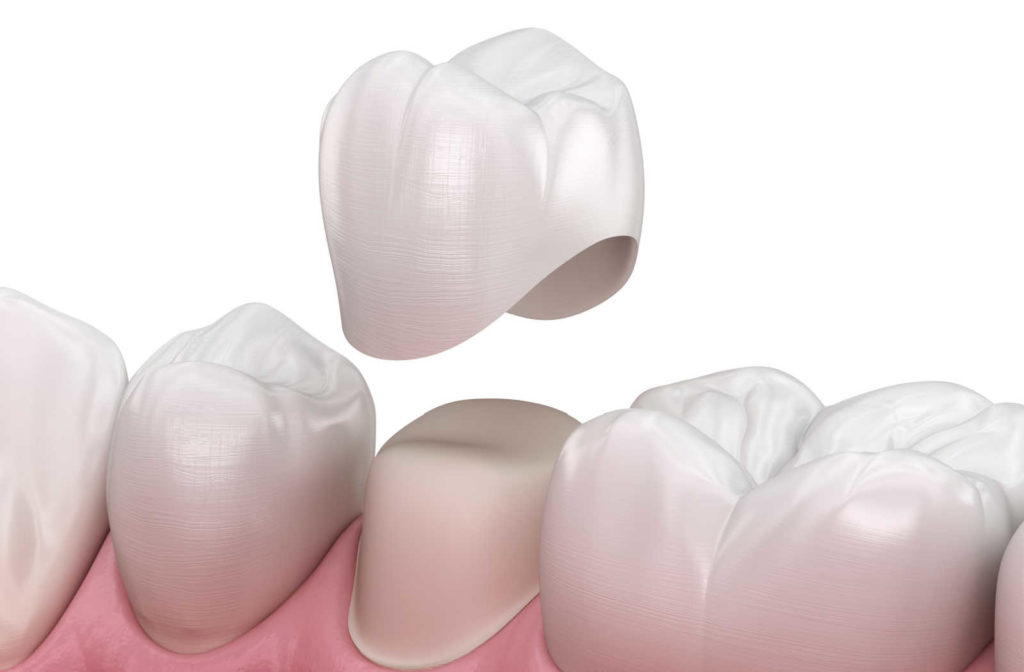Damaged teeth don’t have to stand out. Crowns are tooth-shaped caps that can hide damage and restore strength and durability to a tooth. They can help restore a tooth’s function and support the appearance of your teeth.
Crowns are available in various materials to suit your preferences and needs best. While they don’t last forever, crowns can last for up to 10-15 years on average when you take care of them and your surrounding teeth.
During your next dental exam, if your dentist recognizes the need for a crown, they will discuss your options with you and answer your questions about getting a crown customized to your teeth.
Why Is a Crown Needed?
Crowns are artificial caps measured to fit over existing teeth affected by decay or damage. When cemented in place, the crown covers the tooth all the way to the gum line for a natural look and feel.
Your dentist may recommend a crown for a variety of reasons, including:
- To protect a weak, decayed, or cracked tooth
- To restore a worn-down tooth
- To hold a dental bridge in place
- For a cosmetic fix
- To cover a misshapen or discoloured tooth
- As a follow-up to a root canal
What Are the Different Types of Crowns Available?
As you and your dentist discuss the different types of crowns available, they’ll make recommendations based on several factors, including:
- The location of the tooth
- The anticipated visibility of the crown when you smile
- How much natural tooth is intact
The durability and aesthetics of each material are also critical factors in deciding on your crown. Each type of crown may have a different lifespan, which is something to consider.
Metal Crowns
Gold is one of the longest-used materials in restorative dental care, and dentists still use gold with other mixed metals for crowns. Metals are highly durable and can withstand the high force of biting and chewing. Gold crowns rarely break or wear down, so they can last for decades.
The obvious drawback is the eye-catching nature of gold. It can look unnatural and is difficult to hide. Dentists often suggest metal crowns for out-of-sight molars and opt for more natural-looking materials for front teeth.

Composite Crowns
Composite crowns are a tooth-coloured, natural-looking option that can be more affordable but are not always as long-lasting. Compared to other crowns, they can wear down more easily through simple, daily habits like chewing and brushing. The polished surface can fade, leaving the material vulnerable to discolouration or staining.
Porcelain Crowns
With great colour-matching for teeth, porcelain crowns can be a natural-looking choice. Dentists can use them for front teeth because they don’t look artificial and are not strong enough for back molars or premolars. Porcelain is more brittle and is susceptible to chipping than metal.
Porcelain-Fused-to-Metal Crowns
For both the strength of metal and the natural look of porcelain, porcelain-fused-to-metal crowns offer an excellent choice. Your dentist can colour-match adjacent teeth when putting in these crowns, and they’re suitable for front or back teeth.
The outer porcelain layer can still be prone to chipping, but if you properly care for your crown, it can last 10-15 years.
How Long Does a Crown Last?
The material isn’t the only factor affecting how long your crown lasts. Your oral hygiene and habits can also play a role in a crown’s longevity.
Factors Affecting a Dental Crown’s Lifespan
The lifespan of your dental crown can also be affected by:
- The health of the tooth beneath the crown, such as the roots, gums, and bone
- Tooth grinding at night, which can wear down, damage, or destabilize the crown
- Unhealthy tooth habits, including using your teeth as tools to rip or open things, chewing on ice, and biting nails
Maintaining essential oral hygiene habits such as brushing 2 to 3 times per day, flossing, and getting a dental cleaning every 6 months can support your crown’s integrity and longevity.
When to Replace Your Crown
At your regular dental exams, your dentist will monitor the health of your teeth and quality of your crown. If there are problems or unusual signs of wear, your dentist will address them with you or prepare you for having to replace your crown.
Between your appointments, monitor your crowns closely for signs that they need to be replaced. Food and bacteria buildup under a broken, damaged, or aged crown can cause cavities, tooth decay, or gum disease.
Signs that may suggest your crown needs to be replaced include:
- Pain in the tooth with the crown
- A change in the crown’s appearance
- A feeling that the crown is moving or coming loose
If you’re experiencing irritation in and around a crowned tooth, schedule a dental exam to identify any problems with the tooth or surrounding tissue.
Get a Dental Exam to Prevent Tooth Decay
Cavities, plaque buildup, and potential problems with a crown can be addressed with a thorough cleaning and dental exam. Make an appointment to get a full assessment of your mouth’s health and learn preventative oral hygiene habits.


